Healing Portals: Jessica Vollrath
Figures and faces are at the heart of Jessica Vollrath’s mastery in oil painting. It’s her aptitude for color, combined with an instinct to explore the complexities of the human condition and identity, that translates to the canvas with confidence. Born to a Mexican mother and African-American father, Jessica was raised alongside eleven siblings with a Mennonite upbringing. Her paintings are directly autobiographical and emulate the profound ties of family and faith. The overlaps we might imagine in her story in fact reveal a play of light and shadow, the contrasting influences and the delicate balance in between — a certain type of transition that is both deeply personal and universal.
Jessica Vollrath opens up an intimate conversation around self-discovery, motherhood, and how the desire to truly know oneself is an evolving process in which women traverse and redefine consistently through the different stages of life. In her most recent series Sacred Narratives, Vollrath expands on the inner point of healing and reveals to us where that hallowed space may exist. She constructs a meditative atmosphere through the coexistence of light entering stained glass and the opposing heavier dark waters. The two states that breathe in us not as polarizing rivalries but necessary qualities for us to embody the depths of life.
Vollrath's technique advocates for both precision and fluidity. While her paintings may appear comprehensive from a distance, up close, they reveal a looseness. She often leaves areas intentionally blank with rough edges, allowing the negative space to balance the details. Using a selected color palette and the glazing technique, she easily blends grounded realism with ethereal transitions. Her work not only engages the eye but provokes the senses, the images evoking the sanctuary of the divine as the Texan heat settles in her transparent hues of red.
Vollrath's current approach in her most recent body of work rather arrives from a more rhythmic standpoint. Her latest solo exhibition titled ‘A good end’ showed from April 5th to May 3rd 2025 at the South Dallas Cultural Center’s Arthello Beck Gallery.



You’ve led a quite remarkable and well-traveled life. Do you mind telling us about it?
I was raised as an extremely conservative Christian, way beyond political conservative. It [Mennonite] was more like any extremist religion, where women were subservient. We covered our heads. We were submissive to men. Women were not allowed to speak in church. I wasn’t supposed to go to school and get an education because I was raised to just be a mom and a wife. And yet while that was something taught in our church, my mother is an extraordinary woman. I’m one of twelve—and while she physically embodied that role, her spirit was extremely fiery. She would teach me, “Never bow. You don’t belong to a man.” She was always putting those undercurrents in there like, you can do it.
So I left home. I kind of ran away at 19 and did a lot of things alone. It was a hard journey. When I was about 22, I asked myself: If I’m never a wife, and if I’m never a mother, what is my worth on the planet? And I wanted to find that out. So I decided to go to school for art, even though I didn’t know what that meant. To this day, I’m the only one in my family who holds a degree. I got my bachelor’s degree, moved to New York — it was amazing. I worked at Christie’s Art Auction House and in galleries. I was engaged at the time, but that engagement dissolved when I was 29. I was devastated, so I traveled internationally. I worked in India, and became a doula. I was in the South, below Chennai. When I came back, I realized I could be a professor and I got my master’s degree from Texas Woman's University. I’m in my 10th year of being a college professor, and I think I’m about to take a sabbatical so I can really focus on my art career as things kind of ramp up.
The journey has been really long. It has been, at times, extremely painful. But all of those intense moments of having to question who I was, what I believed, and to leave everything I knew about what it meant to be a woman... Finding my own way, my own voice, learning to survive outside of the protection of a man was really incredible. Making my own way, not being attached and married was something that, at the time, I would have said then is extremely painful. But living through it now, my life has been a beautiful, beautiful experience.
“...My mother is an extraordinary woman [....] her spirit was extremely fiery. She would teach me, ‘Never bow. You don’t belong to a man.’ She was always putting those undercurrents in there like, you can do it.”
Can you tell us about your current exhibition ‘A good end’ at the South Dallas Cultural Center?
“Quite simply, if I had the chance to choose, how did I want to die? Answering that question has informed me on how I want to live.”
I’ve been inadvertently working on this exhibition for the past year. In the beginning I had completely different ideas for the show, but over time all of those paintings fell flat. While I was expending massive amounts of energy creating the “serious” work I had envisioned, I was also working on what I felt were “random” pieces in between. This show is a culmination of all of those seemingly random pieces that fit together perfectly. The resounding feedback from the audience for A good end has been that the energy felt sacred. Like a temple or a church, where you can have this experience with the divine. Being able to bring the sacred out of a certain religion and into a gallery has been such an unexpected honor.
Narratively, I’ve been thinking about how I wanted to feel at the end of my life, should I be so blessed to take it retrospectively at the end. Would I have lived courageously? Creatively? Passionately? I realized that without a vision of A good end, it was impossible for me to live a life that was purposeful, full of freedom and love. Quite simply, if I had the chance to choose, how did I want to die? Answering that question has informed me on how I want to live. The pieces in this show are a mix of past, present and future dreams that all come together to give a message of hope that maybe, just maybe it can all end well. Another exciting part of this exhibition is my collaboration with my sister, Nicole Gregory for my first installation. Our two visions coalesced seamlessly as only family ties can and the music and video piece she created for the show are absolutely ethereal.


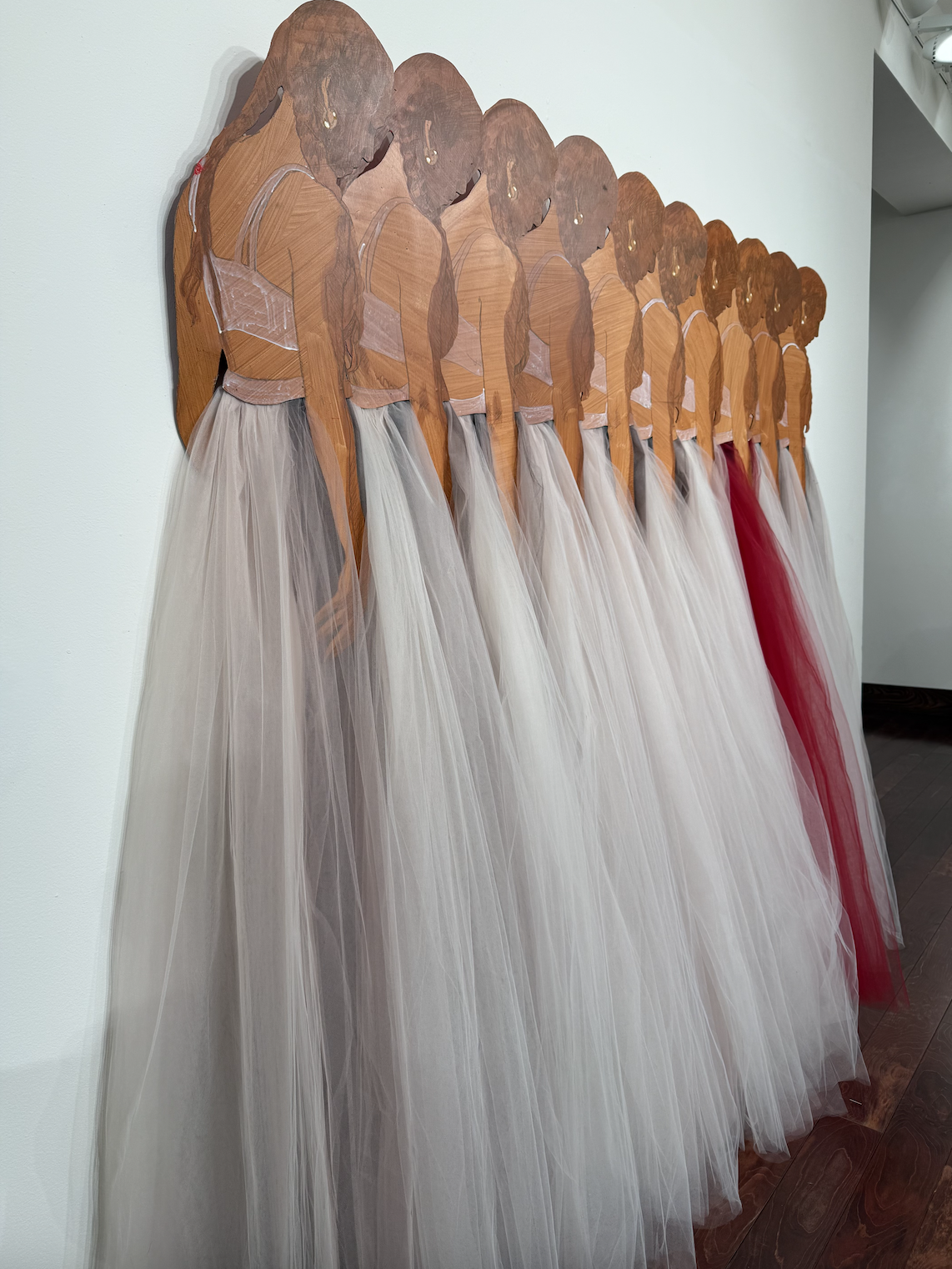
In which ways do you think your upbringing and cultural heritage have influenced your artistic identity and work?
I have always felt “other” in every crowd. Raised mixed race in an all white community, you feel that at the heart of it, you do not belong to this collective. When I went to Howard University for my BFA, although not an outsider physically, I quickly realized I had no reference for the colloquial narrative of blackness in America. My childhood was spent looking at the stars, engaging in deep prayer and mediation and wondering what lay beyond. As I’ve grown older and understood the myth of normal, it has allowed me to stop trying to blend in and instead tell the stories that deeply resonate with my spirit. Those often take on a more existential and spiritual tone filled with a lot of mythos and feminine energy. The stories straddle the line of many painful binaries and build bridges between opposing trues, as my upbringing taught me to do with grace and empathy.
It’s beautiful that you’re open to being vulnerable now, and it also means a lot to us listening to your story as two young women. Can you talk about how motherhood is transforming your perspective?
I’m a mother of two girls, four and five, they’re precious. I also adore my husband, it’s a beautiful partnership and it’s hard to tell my story without giving him a lot of gratitude. I always explain it like: I’m the universe and he’s gravity. When I was younger, the thought of being a mother to girls was very intimidating. But as I’ve gotten older, being a mother to girls is such an honor and a privilege and I’m so stoked about it. I realized a lot of that fear came from not enjoying my own experience as a woman growing up. If you haven’t made peace with that—if you haven’t found your voice and your power—it’s really intimidating to want to raise daughters. There’s so much fear and trepidation.
“Our strength doesn’t always fight; it surrenders. We overcome pain through stillness, which is a beautiful and sacred thing.”
I had my daughters at home through natural childbirth. That experience pushed me over the edge into what I understood as my feminine power. It unlocked a lot of things for me, that surrender, the strength we have as women and the ability to stand in pain and not give in. Our strength doesn’t always fight; it surrenders. We overcome pain through stillness, which is a beautiful and sacred thing. And that changed me. After becoming a mom, I realized I wanted my daughters to live in a world where they were free to be themselves in their fullest capacity. That meant I had to face the parts of myself I’d pushed under the rug. Up until then, I wasn't painting, my story wasn’t available. I was raised a Mennonite, I was homeschooled, and I have 12 siblings. That arouses a lot of questions which I hadn't been ready to answer at the time.
But I realized, in order to access the future I was meant to have, I had to accept the past. I had to be at peace with it. After becoming a mom, I was ready to answer those questions and consider, what does that mean to me now? I know more Bible verses than most pastors. I know the Bible best. But I’m not religious anymore. So, what do I do with this incredible upbringing? I’m not opposed to religion. I just live in the sacred now. I honor it. I understand faith and belief systems that are not mine. And I respect them deeply. I'm just reintroducing that divine component of my soul to the conversation that has been, I didn't expect for it to have the reception that it's gotten. But I think what I've noticed in our generation is that we're leaving institutionalized religion in masses, right? Churches are empty. And I think for me, even though I may leave that structured dogma, I still long for the sacred. That has allowed me to explore my own beliefs in a non-angry way.



You mentioned you collaborated with your sister, Nicole Gregory for one of your artworks. How did it go for you?
I have three sisters, and we’re the oldest of the twelve born one year after another. We grew up singing in churches, putting on concerts. When we all split off and left home, we stopped performing together. We were able to develop our own things. One of my sisters lives really close to me now, she’s a business owner and she’s brilliant. So when I was creating the show, I kept hearing music like a chant that I felt needed to go along with this exhibition. I went to her and told her about this, and she said she already might have written the song. She had been composing this acapella piece, it’s a melody without words, and it was absolutely everything I ever wanted. I asked her if she would be willing to continue that piece for the installation I was preparing. She had a video that went along with it, together it created the finished work. During the opening night when you walked into the gallery, you could hear the chant which created an extra layer. It was incredibly powerful. It has been a real honor working with her and I hope to continue our collaboration. There’s also this factor where I don’t have to tell her my story, she already knows, because we were all raised the same way. I was really able to tap into something that I had lost over the years, the synergy that came with working with my sister. She’s more on the musical and video side where I’m more tactile and technical. Together, our talents can create some interesting installations, I think.
Your story seems to honor your lineage, how have the women in your ancestry guided your artistic practice? Is it a subject worth visiting creatively?
My creative projects, while filtered through my personal lens and colored by my experience are channeled from somewhere else. I like to think that I am here because my ancestors prayed for me to exist. It creates a sense of responsibility to do well with what I've been given through the great sacrifice and resilience of the ones who came before. I am grateful for the mothers in my lineage who prayed and fought for me to have this moment. I visit that idea often in my work with my repeating figures and hope to explore that more in the future.
“As I’ve grown older and understood the myth of normal, it has allowed me to stop trying to blend in and instead tell the stories that deeply resonate with my spirit.”
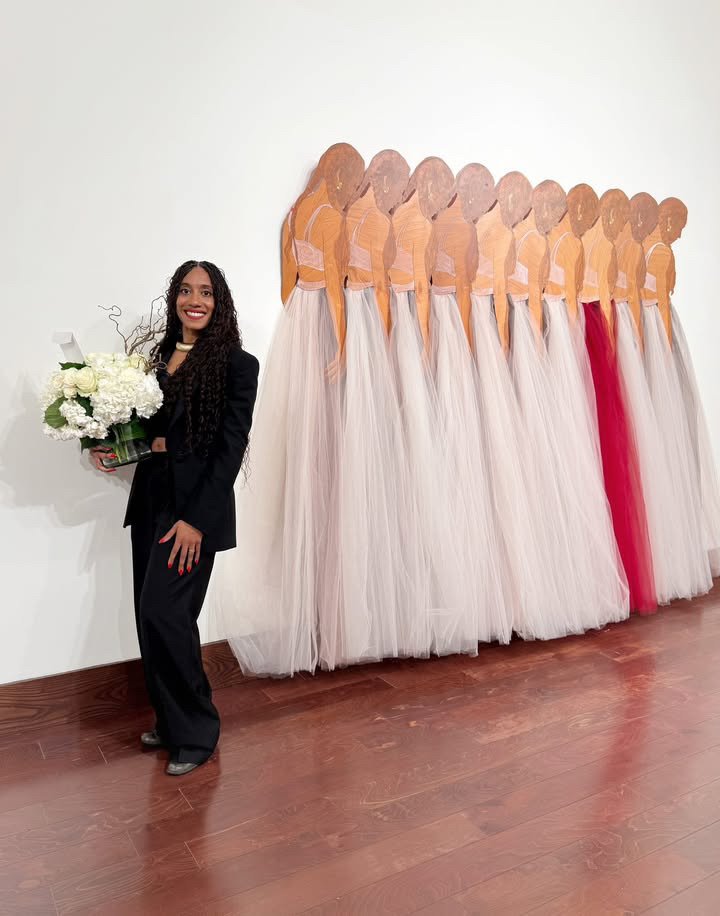
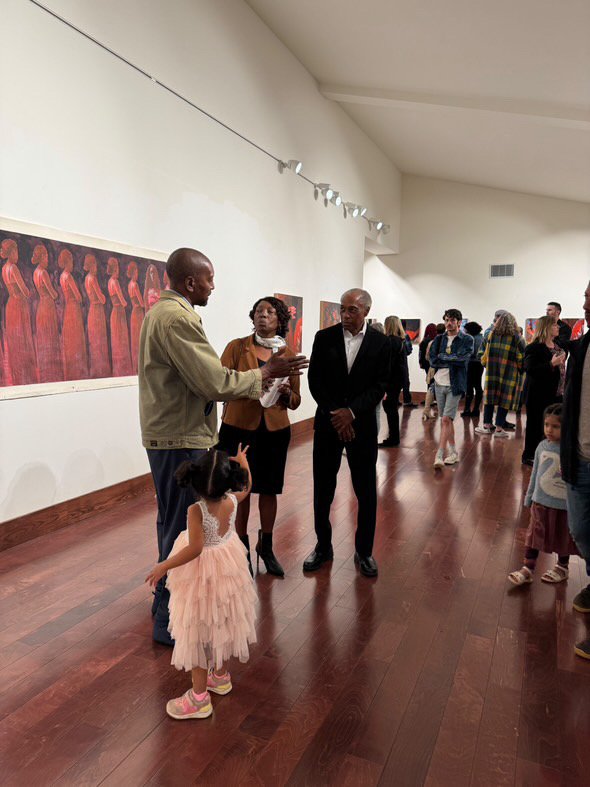
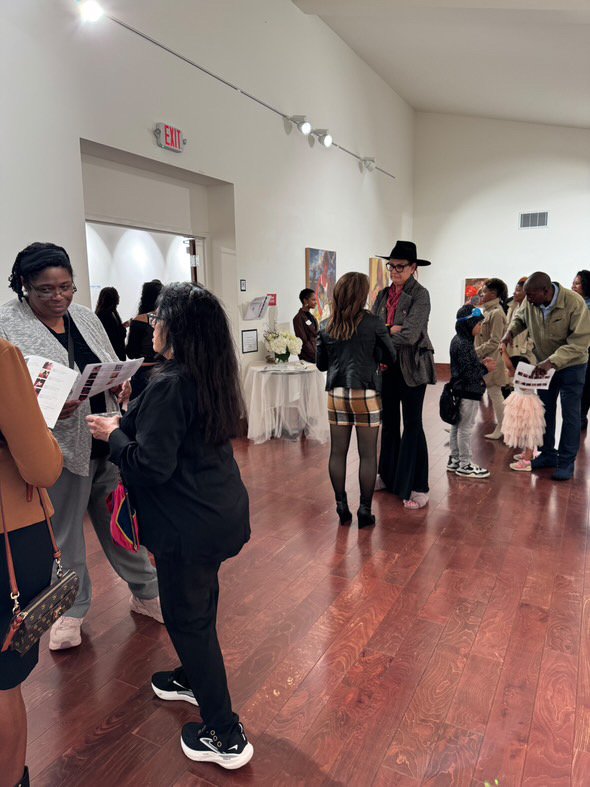
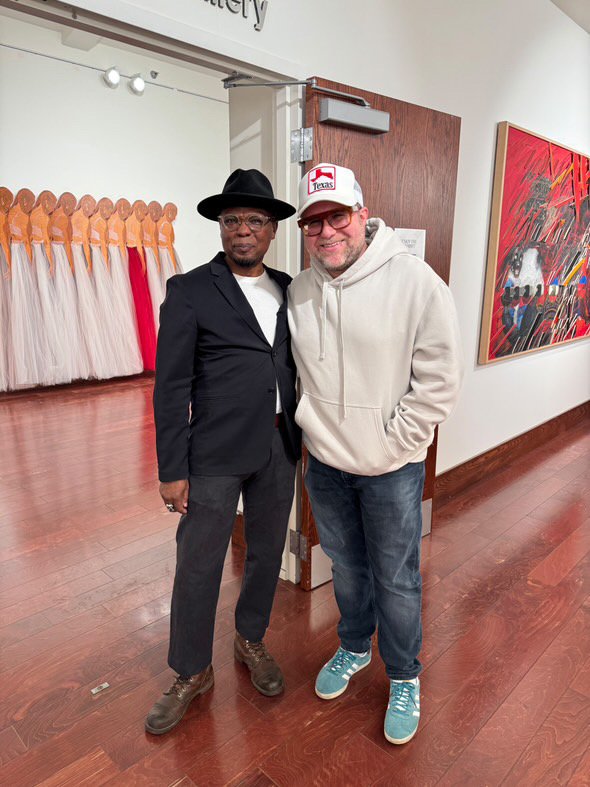

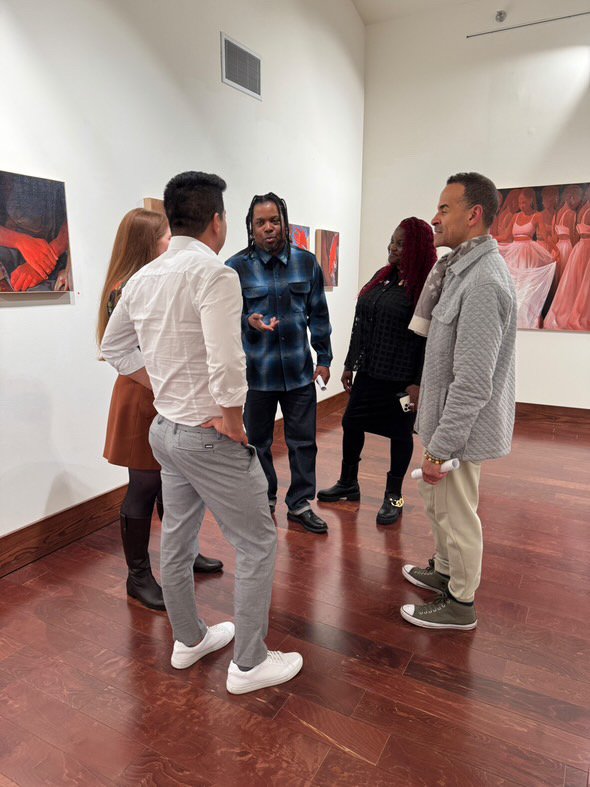
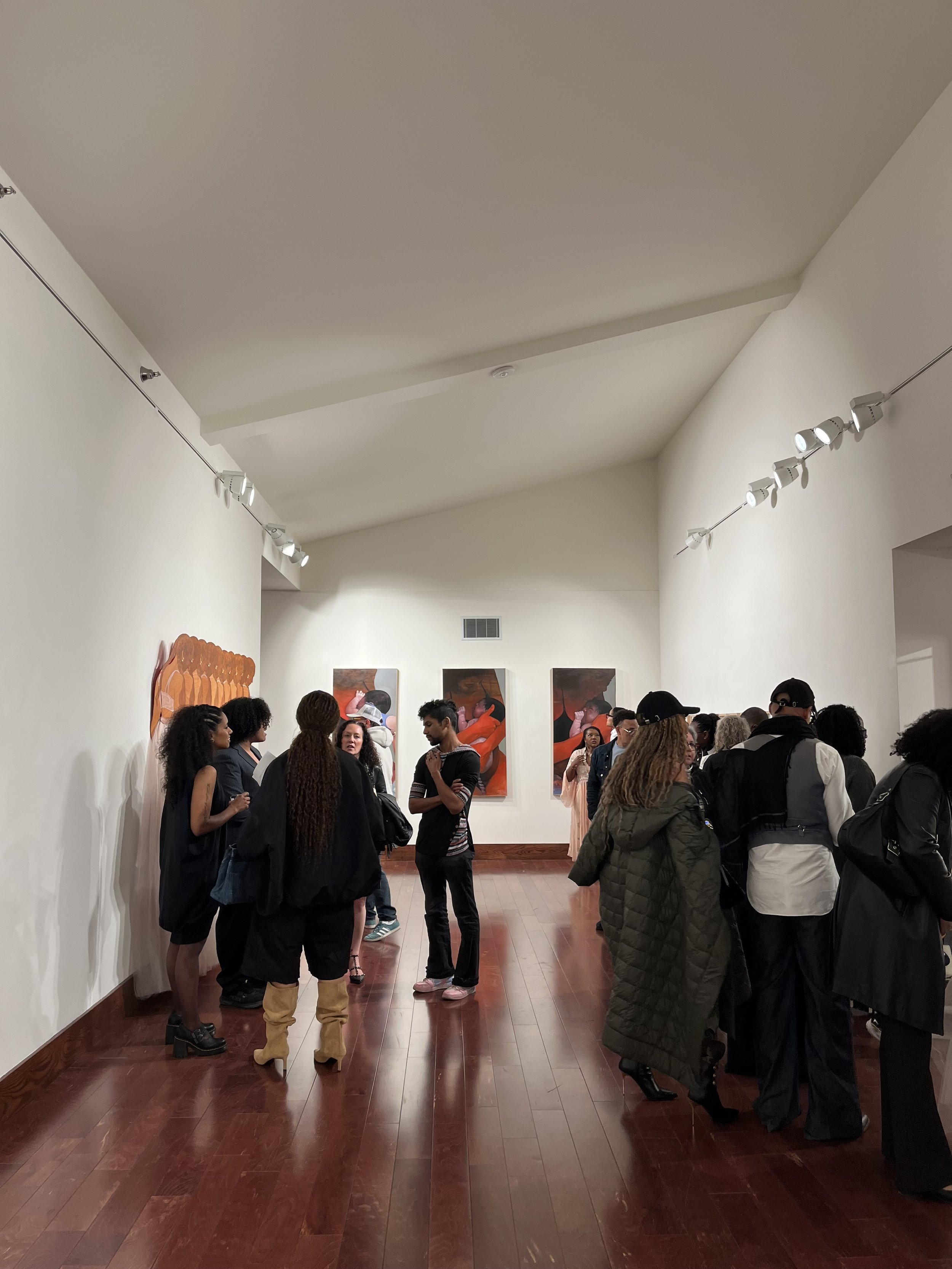
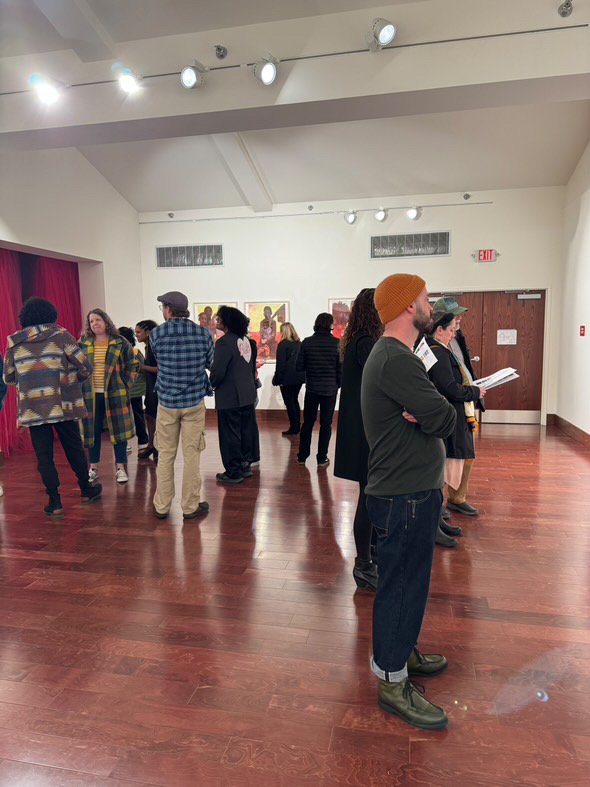
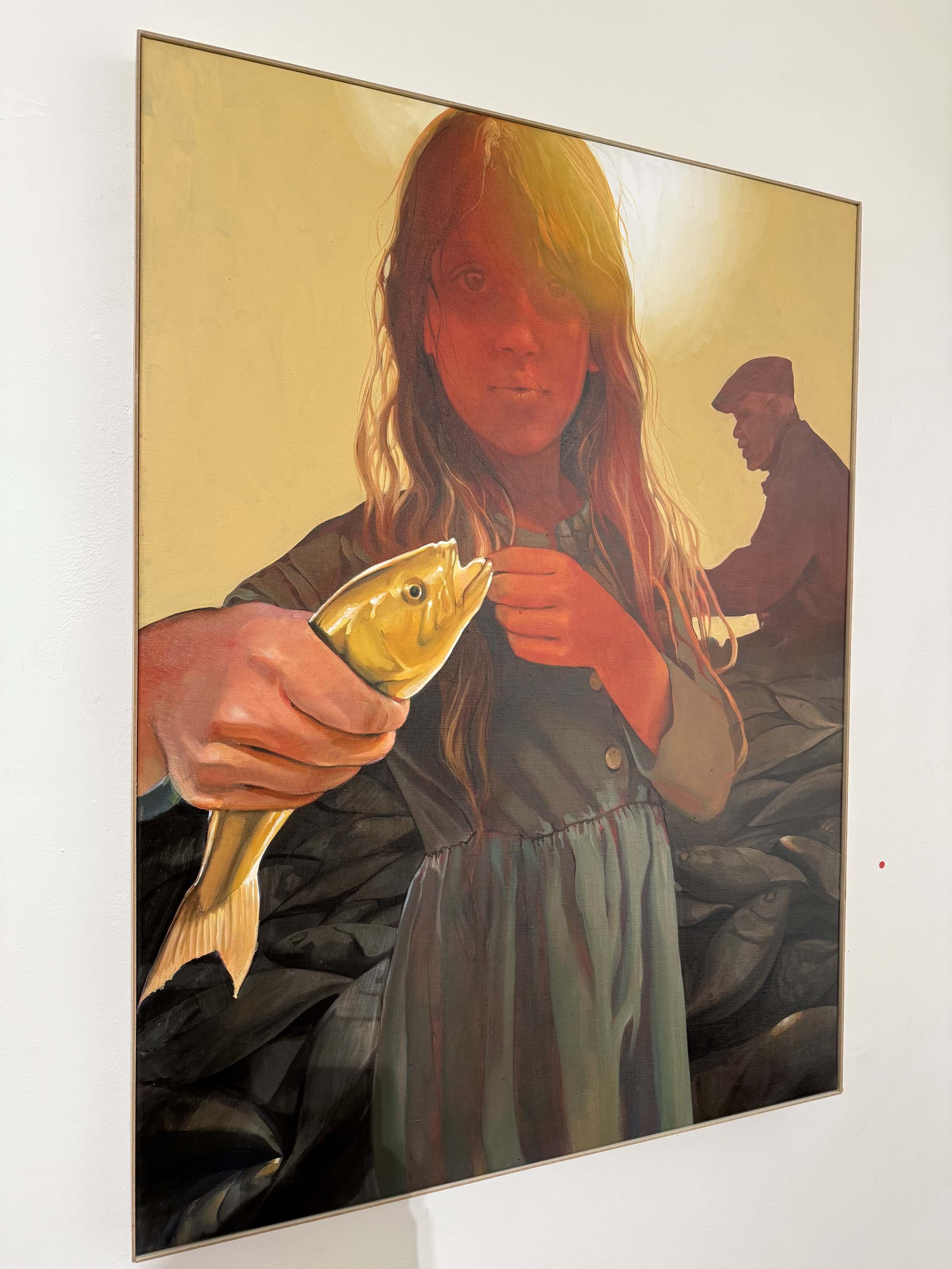

How would you describe the current Dallas art scene for women artists? What are some of the strengths of the community, and where is there room for growth?
I would say the Dallas art scene is really burgeoning and becoming something beautiful. There are a lot of investors who are interested. I think we’re a little more cautious in what we accept as an appropriate subject matter. Texas is still in the South and a very conservative state. But my own work is not scandalous in any way, so I haven’t come up against any opposition personally and from what I’ve experienced the community has been extremely accepting and cheering on our success. It has been a loving and nurturing place to grow as an artist.
I think Dallas is very anxious to be on the art scene in a serious way, so they’re pushing the boundaries outside its comfort zones, which is awesome, right? The most we can ask from people is the flexibility to realize the need for change. There’s some wildly talented people here. There’s also the art fair where we have international galleries and New York galleries to visit. So that’s exciting and new. It has a long way to go, but I think Dallas as a whole wants to be seen as a more metropolitan city, and we are very diverse. Believe it or not, we are very, very diverse, but you wouldn't really know that because we don't quite wear our diversity as a badge, but it’s definitely changing.
Where can we find you in 2025? Any upcoming projects / locations you’d like to exhibit your work?
2025 has already been a packed year for me, with 10 group exhibitions and 1 solo. I plan on taking it easy the remainder of 2025 and working on 2 solo exhibitions already on the books for 2026. It usually takes me about a year to formulate and flesh out an idea fully, so I look forward to laying low and letting myself change and grow both personally and creatively.



